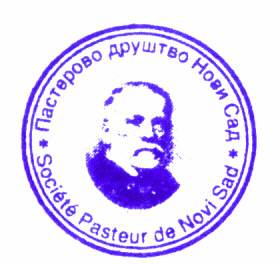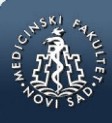md-medicaldata
Main menu:
- Naslovna/Home
- Arhiva/Archive
- Godina 2024, Broj 1
- Godina 2023, Broj 3
- Godina 2023, Broj 1-2
- Godina 2022, Broj 3
- Godina 2022, Broj 1-2
- Godina 2021, Broj 3-4
- Godina 2021, Broj 2
- Godina 2021, Broj 1
- Godina 2020, Broj 4
- Godina 2020, Broj 3
- Godina 2020, Broj 2
- Godina 2020, Broj 1
- Godina 2019, Broj 3
- Godina 2019, Broj 2
- Godina 2019, Broj 1
- Godina 2018, Broj 4
- Godina 2018, Broj 3
- Godina 2018, Broj 2
- Godina 2018, Broj 1
- Godina 2017, Broj 4
- Godina 2017, Broj 3
- Godina 2017, Broj 2
- Godina 2017, Broj 1
- Godina 2016, Broj 4
- Godina 2016, Broj 3
- Godina 2016, Broj 2
- Godina 2016, Broj 1
- Godina 2015, Broj 4
- Godina 2015, Broj 3
- Godina 2015, Broj 2
- Godina 2015, Broj 1
- Godina 2014, Broj 4
- Godina 2014, Broj 3
- Godina 2014, Broj 2
- Godina 2014, Broj 1
- Godina 2013, Broj 4
- Godina 2013, Broj 3
- Godina 2013, Broj 2
- Godina 2013, Broj 1
- Godina 2012, Broj 4
- Godina 2012, Broj 3
- Godina 2012, Broj 2
- Godina 2012, Broj 1
- Godina 2011, Broj 4
- Godina 2011, Broj 3
- Godina 2011, Broj 2
- Godina 2011, Broj 1
- Godina 2010, Broj 4
- Godina 2010, Broj 3
- Godina 2010, Broj 2
- Godina 2010, Broj 1
- Godina 2009, Broj 4
- Godina 2009, Broj 3
- Godina 2009, Broj 2
- Godina 2009, Broj 1
- Supplement
- Galerija/Gallery
- Dešavanja/Events
- Uputstva/Instructions
- Redakcija/Redaction
- Izdavač/Publisher
- Pretplata /Subscriptions
- Saradnja/Cooperation
- Vesti/News
- Kontakt/Contact
 Pasterovo društvo
Pasterovo društvo
- Disclosure of Potential Conflicts of Interest
- WorldMedical Association Declaration of Helsinki Ethical Principles for Medical Research Involving Human Subjects
- Committee on publication Ethics
CIP - Каталогизација у публикацији
Народна библиотека Србије, Београд
61
MD : Medical Data : medicinska revija = medical review / glavni i odgovorni urednik Dušan Lalošević. - Vol. 1, no. 1 (2009)- . - Zemun : Udruženje za kulturu povezivanja Most Art Jugoslavija ; Novi Sad : Pasterovo društvo, 2009- (Beograd : Scripta Internacional). - 30 cm
Dostupno i na: http://www.md-medicaldata.com. - Tri puta godišnje.
ISSN 1821-1585 = MD. Medical Data
COBISS.SR-ID 158558988
UTICAJ POLA NA KLINIČKE KARAKTERISTIKE I TERAPIJSKI ODGOVOR KOD BOLESNIKA SA ANKILOZIRAJUĆIM SPONDILITISOM
/
INFLUENCE OF SEX ON CLINICAL CHARACTERISTICS AND THERAPEUTIC RESPONSE IN PATIENTS WITH ANKYLOSING SPONDILITIS
Authors
Biljana Milić1,2, Tatjana Ilić1,2 , Tanja Janković2,3 , Sonja Golubović1,2 , Olgica Latinović-Bošnjak4 , Katarina Ilić 5
1Klinički Centar Vojvodine, Klinika za nefrologiju i kliničku imunologiju, Novi Sad
2Univerzitet u Novom Sadu, Medicinski fakultet, Novi Sad
3Specijalna bolnica za reumatske bolesti, Novi Sad
4Klinički Centar Vojvodine, Klinika za gastroenterologiju i hepatologiju, Novi Sad
5Roche,d.o.o., Beograd, Srbija
UDK: 616.45-089-06(497.11)"2012/2016"
The paper was received / Rad primljen: 03.05.2020.
Accepted / Rad prihvaćen: 26.05.2020.
Correspondence to:
Biljana Milić,
Puškinova 22, Novi Sad,
021/ 452213, 063/7197561,
e-mail: biljana.milic@ mf.uns.ac.rs
Sažetak
Cilj rada: Utvrditi razlike između muškaraca i žena obolelih od ankilozirajućeg spondilitisa (AS) u pogledu kliničke prezentacije, aktivnosti bolesti, funkcionalnog statusa i odgovora na terapiju inhibitora tumorskog faktora nekroze alfa (TNF-α inhibitor). Metode: Studija je obuhvatila 59 AS bolesnika lečenih TNF-α inhibitorom tokom najmanje 12 nedelja. Uvođenje i procena terapijskog odgovora na TNF-α inhibitor je sprovedena prema ASAS-EULAR preporukama za lečenje ove bolesti. Klinički i demografski parametri su upoređivani između muških i ženskih bolesnika. Rezultati: Od ukupnog broja bolesnika, 24(40,68%) su bile žene i 35(59,32%) muškarci. Žene su bile starije od muškaraca u momentu ispitivanja (p=0,049), u vreme postavljanja dijagnoze (p=0,05) kao i započinjanja biološkog leka (p=0,009). Takođe, kod žena se značajno duže kasnilo sa dijagnozom bolesti u odnosu na muškarce (p=0,017). Nije bilo razlike između polova u pogledu prevalence humanog leukocitnog antigena (HLA)-B27, niti prisustva perifernog artritisa, daktilitisa, entezitisa, uveitisa ili inflamatorne bolesti creva (IBD). Parametri vezani za aktivnost bolesti i funkcionalni status se takođe nisu razlikovali između grupa. Muškarci su duže vreme ostajali na prvom TNF-α inhibitoru (p=0,031). Ukupno pet bolesnika je iskazalo primarnu ili sekundarnu neefikasnost na TNF-α inhibitor, od toga jedna žena (4.2%) i četiri muškarca (11,4%) (p=0,61). Svi bolesnici su nastavili lečenje drugim TNF-α inhibitorom što je bilo praćeno dobrim kliničkim odgovorom. Zaključak: U našem uzorku AS bolesnika prisustvo ženskog pola je bilo vezano za duže kašnjenje u postavljanju dijagnoze bolesti. Bolesnici se nisu međusobno razlikovali u pogledu neefikasnosti na prvi TNF-α inhibitor, ali su muškarci bili duže lečeni ovim lekom.
Ključne reči:
ankilozirajući spondilitis, pol, kliničke karakteristike, TNF-α inhibitor, neefikasnost
Abstract
Objectives: The aim of this study was to assess gender differences in AS patients regarding the clinical presentation, disease activity, functional status and response to tumor necrosis factor-alpha inhibitor (TNF-α inhibitor) therapy. Methods: This retrospective analysis included 59 AS patients treated with first TNF-α inhibitor for at least 12 weeks. TNF-α inhibitor therapy introduction and response was determined according to ASAS-EULAR management recommendations for AS. Clinical and demographic parameters were compared between the female and male patients. Results: Twenty-four patients (40,68%) were females and 35(59,32%) were males. Women were older than male at moment of study (p=0,049), at the time of diagnosis (p=0,05) and when starting biologic therapy (p=0,009). Moreover, they had a longer diagnosis delay (p=0,017) compared to men. Prevalence of HLA-B27 status and the rate of peripheral arthritis, dactylitis, enthesitis, uveitis or inflammatory bowel disease (IBD) were not different between two groups. Disease activity and functional status were also similar in both groups. Males had a significantly longer drug survival time for first biologic (p=0,031). One female patient (4.2%) and 4 male patients (11,4%) showed primary or secondary inefficacy to TNF-α inhibitor (p=0,61). All 5 non-responders switched to second TNF-α inhibitor and showed a good clinical response. Conclusions: In our cohort, the presence of the female gender was related to longer diagnosis delay compared to males. Non-response rate for the first TNF-α inhibitor was similar between groups, but men had longer drug survival time for the first biologic.
Key words:
ankylosing spondylitis, gender, clinical features, TNF-α inhibitor, non-response
References:
- Dougados M, Baeten D. Spondyloarthritis. Lancet. 2011; 377:2127–2137.
- Schlosstein L, Terasaki PI, Bluestone R, Pearson CM. High association of an HL-A antigen, W27, with ankylosing spondylitis. N Engl J Med. 1973; 288:704–706.
- Dean L, Jones G, Macdonald A, Downham C, Sturrock R, Macfarlane G. Global prevalence of ankylosing spondylitis. Rheumatology (Oxford). 2014; 53:650–657.
- West HF. Aetiology of ankylosing spondylitis. Ann Rheum Dis 1949;8(2):143-148.
- Lee W, Reveille JD, Weisman MH. Women with ankylosing spondylitis: a review. Arthritis Rheum 2008;59:449-454.
- Feldtkeller E, Bruckel J, Khan MA. Scientific contributions of ankylosing spondylitis patient advocacy groups. Curr Opin Rheumatol 2000;12:239-47.
- Jung YO, Kim I, Kim S, Suh CH, Park HJ, Park W, Kwon SR et al. Clinical and radiographic features of adult-onset ankylosing spondylitis in Korean patients: comparisons between males and females. J Korean Med Sci 2010;25:532-535.
- Roussou E, Sultana S. Spondyloarthritis in women: differences in disease onset, clinical presentation, and Bath Ankylosing Spondylitis Disease Activity and Functional Indices (BASDAI and BASFI) between men and women with spondyloarthritides. Clin Rheumatol 2011;30 (1):121-7.
- van der Horst-Bruinsma IE, Zack DJ, Szumski A, Koenig AS. Female patients with ankylosing spondylitis: analysis of the impact of gender across treatment studies. Ann Rheum Dis 2013;72:1221-4.
- Ibn Yacoub Y, Amine B, Laatiris A, Hajjaj-Hassouni N. Gender and disease features in Moroccan patients with ankylosing spondylitis. Clin Rheumatol 2012;31:293-7.
- Lee W, Reveille JD, Davis JC Jr, Learch TJ, Ward MM, Weisman MH et al. Are there gender differences in severity of ankylosing spondylitis? Results from the PSOAS cohort. Ann Rheum Dis 2007;66:633-8.
- Tournadre A, Pereira B, Lhoste A, Dubost JJ, Ristori JM, Claudepierre P, Dougados M, Soubrier M. Differences between women and men with recent-onset axial spondyloarthritis: results from a prospective multicenter French cohort. Arthritis Care Res 2013;65:1482-9.
- Slobodin G, Reyhan I, Avshovich N, Balbir-Gurman A, Boulman N, Elias M, Feld J et al. Recently diagnosed axial spondyloarthritis: gender differences and factors related to delay in diagnosis. Clin Rheumatol 2011;30:1075-80.
- Landi M, Maldonado-Ficco H, Perez-Alamino R, MaldonadoCocco JA, Citera G, Arturi P, et al. Gender differences among patients with primary ankylosing spondylitis and spondylitis associated with psoriasis and inflammatory bowel disease in an iberoamerican spondyloarthritis cohort. Medicine (Baltimore). 2016;95(51):e5652.
- Zarco P, Gonzalez CM, Rodriguez dela Serna A, Peiro E, Mateo I, Linares L, et al. Extra-articular disease in patients with spondyloarthritis. Baseline characteristics of the spondyloarthritis cohort of the AQUILES study. Reumatol Clin. 2015;11(2):83–9.
- Webers C, Essers I, Ramiro S, Stolwijk C, Landewe R, van der Heijde D, et al. Gender-attributable differences in outcome of ankylosing spondylitis: long-term results from the Outcome in Ankylosing Spondylitis International Study. Rheumatology (Oxford). 2016;55(3):419–28.
- Mitulescu TC, Popescu C, Naie A, Predeteanu D, Popescu V, Alexandrescu C, et al. Acute anterior uveitis and other extraarticular manifestations of spondyloarthritis. J Med Life. 2015;8(3):319–25.
- Ramiro S, Stolwijk C, van Tubergen A, van der Heijde D, Dougados M, van den Bosch F, Landewé R. Evolution of radiographic damage in ankylosing spondylitis: a 12 year prospective follow-up of the OASIS study. Ann Rheum Dis 2013;74:52-9.
- Lubrano E, Perrotta FM, Manara M, D'Angelo S, Addimanda O, Ramonda R, et al. The sex influence on response to tumor necrosis factor-alpha inhibitors and remission in axial spondyloarthritis. J Rheumatol. 2018; Feb;45(2):195-201.
- Kilic G, Kilic E, Ozgocmen S. Is there any gender-specific difference in the cut-off values of ankylosing spondylitis disease activity score in patients with axial spondyloarthritis? Int J Rheum Dis. 2017;20(9):1201–11.
- Rusman T, ten Wolde S, Euser SM, van der Ploeg T, van Hall O, Van der Horst-Bruinsma IE. Gender differences in retention rate of tumor necrosis factor alpha inhibitor treatment in ankylosing spondylitis:a retrospective cohort study in daily practice. Int J Rheum Dis. 2018 Apr;21(4):836–42
- Van Der Linden S, Valkenburg HA, Cats A. Evaluation of diagnostic criteria for ankylosing spondylitis. A proposal for modification of the New York criteria. Arthritis Rheum. 1984; 27:361–8.
- Van der Heijde D, Ramiro S, Landewe R, Baraliakos X, Van den Bosch F , Sepriano A et al. 2016 update of the ASAS-EULAR management recommendations for axial spondyloarthritis. Ann Rheum Dis. 2017; 76:978–91.
- Aloush V, Ablin JN, Reitblat T, Caspi D, Elkayam O. Fibromyalgia in women with ankylosing spondylitis. Rheumatol Int. 2007;27(9): 865–8.
- Hoyle E, Laval SH, Calin A, Wordsworth BP, Brown MA. The X-chromosome and susceptibility to ankylosing spondylitis. Arthritis Rheum 2000;48:1353–55.
- Zhang G, Luo J, Bruckel J, Weisman MA, Schumacher HR, Khan MA, et al. Genetic studies in familial ankylosing spondylitis susceptibility. Arthritis Rheum 2004;50:2246–54.
- Tsui HW, Inman RD, Paterson AD, Reveille JD, Tsui FWL. ANKH variants associated with ankylosing spondylitis: gender differences. Arthritis Res Ther 2005;7:R513–25.
- de Carvalho HM, Bortoluzzo AB, Goncalves CR, da Silva JA, Ximenes AC, Bertolo MB, et al. Gender characterization in a large series of Brazilian patients with spondyloarthritis. Clin Rheumatol. 2012;31(4):687–95.
- Pavelka K, Forejtova S, Stolfa J, Chroust K, Buresova L, Mann H, et al. Anti-TNF therapy of ankylosing spondylitis in clinical practice. Results from the Czech national registry ATTRA. Clin Exp Rheumatol. 2009;27(6):958–63.
- Deodhar A,Yu D.Switching tumor necrosis factor inhibitors in the treatment of axial spondyloarthritis. Semin Arthritis Rheum. 2017;47:343–50.
PDF Milić B. et al • MD-Medical Data 2020;12(2): 061-065
 Medicinski fakultet
Medicinski fakultet